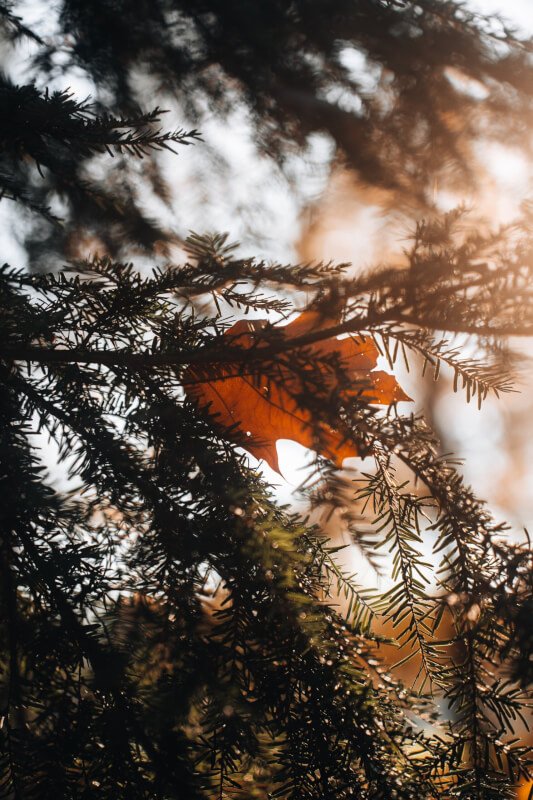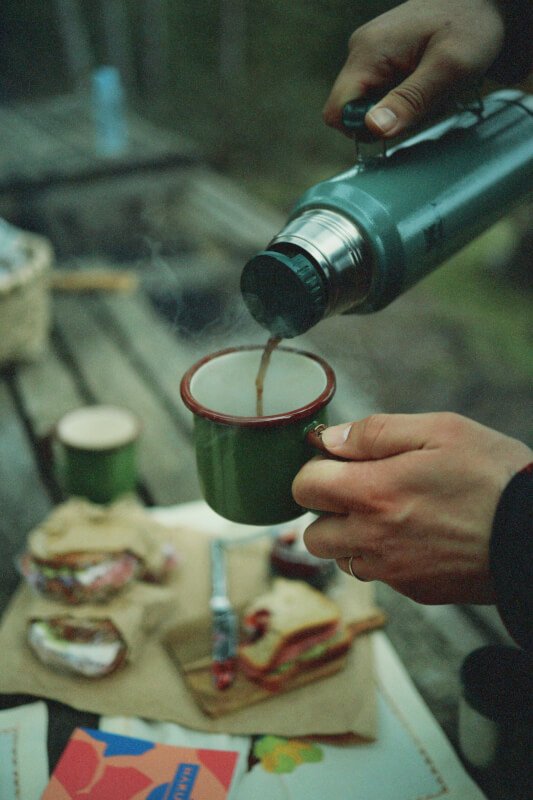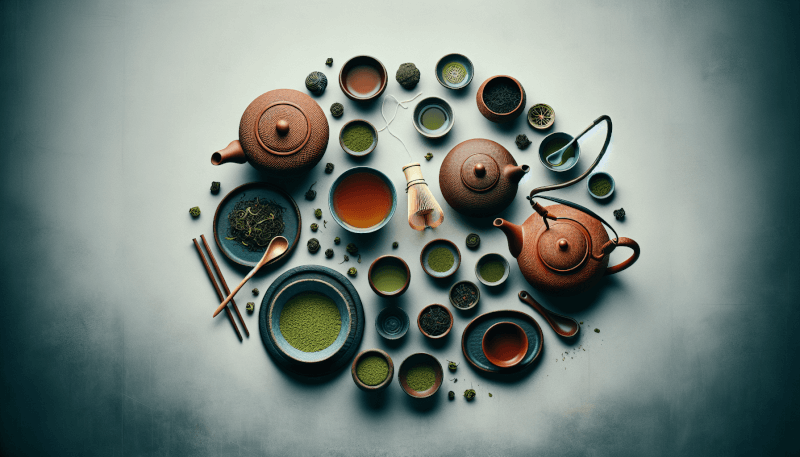Are you a tea enthusiast who loves to experiment with different brewing methods? If so, you’re in for a treat! In this article, we’ll compare various tea brewing techniques to determine which one reigns supreme. From the classic tea bag to the elegant tea infuser, we’ll explore the pros and cons of each method, helping you find the perfect way to brew that aromatic cup of tea you crave. So grab your favorite tea leaves and get ready to discover the best tea brewing method for your taste buds!
1. Traditional Brewing Methods
When it comes to brewing tea, there are a few traditional methods that have been used for centuries. These methods allow you to extract the flavors and aromas of the tea leaves, resulting in a delicious cup of tea.
1.1 Steeping Loose Leaf Tea
Steeping loose leaf tea is a popular traditional brewing method that involves infusing whole tea leaves in hot water. This method allows the tea leaves to fully expand and infuse their flavors into the water, resulting in a rich and flavorful cup of tea. To steep loose leaf tea, simply add the desired amount of tea leaves into a tea infuser or a teapot with a strainer. Then, pour hot water over the leaves and let them steep for the recommended amount of time before removing the leaves and enjoying your tea.
1.2 Steeping Tea Bags
Steeping tea bags is another traditional brewing method that is convenient and easy to use. Tea bags are pre-packaged with a specific amount of tea leaves, making it simple to brew a cup of tea. To steep tea bags, simply place the tea bag in a cup or mug and pour hot water over it. Let the tea bag steep for the recommended amount of time, and then remove it from the cup. While this method may not allow the tea leaves to fully expand like loose leaf tea, it still provides a quick and satisfying cup of tea.
2. Brewing with Tea Infusers
Tea infusers are devices that are used to hold loose tea leaves while they steep in hot water. They come in a variety of shapes and sizes, allowing you to choose the one that best suits your preferences.
2.1 Types of Tea Infusers
There are several types of tea infusers available, each with its own unique design and functionality. One common type is the ball-shaped infuser, which typically consists of a perforated metal ball that opens and closes to hold the tea leaves. Another popular type is the basket infuser, which is a larger, mesh-like container that sits inside a teapot or mug. Additionally, there are also novelty-shaped infusers, such as ones that resemble animals or objects, which add a fun and whimsical touch to your tea brewing experience.
2.2 Pros and Cons of Tea Infusers
Using a tea infuser has its advantages and disadvantages. One of the main benefits is that it allows you to control the amount of tea leaves and customize the strength of your tea. Tea infusers also make it easy to remove the leaves after steeping, preventing over-extraction and bitterness. However, some infusers may not allow the tea leaves to fully expand, resulting in a slightly milder flavor. It is also important to choose a high-quality infuser to ensure that it does not affect the taste of your tea.

3. The Art of Gongfu Cha
Gongfu Cha, also known as “making tea with skill,” is a traditional Chinese tea brewing method that emphasizes precision and attention to detail. This method involves using a smaller teapot or gaiwan to brew a concentrated tea infusion, resulting in a complex and aromatic cup of tea.
3.1 What is Gongfu Cha?
Gongfu Cha is a centuries-old tea brewing technique that originated in China. It involves using a higher ratio of tea leaves to water and shorter steeping times to extract the full flavors of the tea. This method allows for multiple infusions, with each infusion revealing different aspects of the tea’s flavor profile. Gongfu Cha is often seen as a ritualistic practice, as it requires patience and a deep appreciation for the tea being brewed.
3.2 Gongfu Cha Equipment
To practice Gongfu Cha, you will need a few essential equipment pieces. The most important is the teapot or gaiwan, which should be made of clay or porcelain to enhance the tea’s flavors. You will also need a tea tray, which serves as a catchment area for any spilled or excess water. Other necessary tools include a tea pitcher or fairness cup for decanting the infused tea, a small tea strainer, and tea cups or tasting cups that enhance the aroma and presentation of the tea.
3.3 Gongfu Cha Process
The Gongfu Cha process begins by preheating the teapot or gaiwan with hot water to ensure that the tea brews at the optimal temperature. Next, the tea leaves are carefully measured and placed into the teapot or gaiwan. Hot water is then poured over the leaves, and after a brief moment, the tea is poured into a tea pitcher or fairness cup to be decanted. The tea can be poured into smaller cups and enjoyed, or the process can be repeated for subsequent infusions, each with its own unique flavor profile.
4. The Japanese Tea Ceremony
The Japanese tea ceremony, known as “chado” or “sado,” is a highly ritualized and formalized way of preparing and serving matcha, a powdered green tea. This ancient practice focuses on mindfulness and the appreciation of beauty and simplicity.
4.1 Overview of the Japanese Tea Ceremony
The Japanese tea ceremony is deeply rooted in Zen Buddhism and has a long history dating back to the 15th century. It is a cultural and spiritual experience that brings together the principles of harmony, respect, purity, and tranquility. The ceremony typically takes place in a tea room or a designated space and is led by a host who guides the participants through each step of the ceremony.
4.2 Matcha Preparation
In the Japanese tea ceremony, matcha is prepared by whisking a fine green tea powder with hot water using a bamboo whisk called a “chasen.” The preparation process involves specific movements and gestures that signify respect and mindfulness. The resulting matcha is frothy, smooth, and has a unique umami flavor.
4.3 Tea Utensils and Tools
The Japanese tea ceremony requires specific utensils and tools, each with its own symbolic significance. These include a “chawan,” a wide ceramic bowl used for whisking and serving the matcha, a “chashaku,” a bamboo scoop used to measure the correct amount of matcha powder, a “chakin,” a small cloth used to clean the chawan, and a “kensui,” a waste container for discarding the used tea leaves. Each utensil is carefully chosen for its aesthetic appeal and connection to the ceremony’s principles.

5. Cold Brewing
Cold brewing is a modern tea brewing method that involves steeping tea leaves in cold or room temperature water over a longer period of time. This method produces a refreshing and naturally sweet iced tea without the bitterness that can result from hot water brewing and allows for a more delicate extraction of flavors.
5.1 Benefits of Cold Brewing
Cold brewing offers several benefits that make it a popular choice for tea lovers. Firstly, it preserves the delicate flavors of the tea leaves, as the lower temperatures and longer steeping times prevent the tea from becoming bitter. Additionally, cold brewing reduces the release of tannins and caffeine, resulting in a smoother and less astringent cup of tea. The slower extraction process also allows for a more controlled flavor profile, bringing out the subtle nuances of the tea.
5.2 Cold Brew Methods
There are different methods for cold brewing tea, depending on personal preferences and the desired outcome. One common method involves placing tea leaves in a pitcher or jar filled with cold water and then refrigerating the mixture for several hours or overnight. Another method is the “flash chill” method, where hot water is first used to steep the tea, and then the concentrated tea is poured over ice cubes to instantly cool and chill it. Each method offers a different taste experience, allowing you to explore various flavor profiles.
6. The Science of Brewing
Brewing tea is not only an art but also a science. There are several factors that can affect the flavor, aroma, and overall quality of the brewed tea. Understanding these factors can help you optimize the brewing process and achieve the desired outcome.
6.1 Factors Affecting Tea Brewing
There are several factors that can impact the brewing of tea, including the type and quality of tea leaves, water temperature, steeping time, and water quality. Different types of tea require different brewing parameters, with some needing higher temperatures and longer steeping times, while others require lower temperatures and shorter steeping times. The ratio of tea leaves to water is also crucial, as using too many leaves can result in a strong and bitter brew, while using too few can lead to a weak and flavorless cup of tea.
6.2 Optimal Temperature and Steeping Time
The optimal temperature for brewing tea varies depending on the type of tea. For example, black teas generally require hotter water, around 195°F-205°F (90°C-96°C), while green teas are best brewed at lower temperatures, around 160°F-180°F (71°C-82°C). Similarly, steeping times vary, with black teas typically steeping for 3-5 minutes and green teas for 1-3 minutes. It is important to follow the recommended brewing parameters for each type of tea to achieve the best flavor and balance.
6.3 Water Quality and Freshness
Water quality plays a significant role in tea brewing. The quality and composition of the water can affect the taste and aroma of the brewed tea. Ideally, the water should be fresh and free from any strong odors or impurities. Additionally, the mineral content of the water can impact the extraction of flavors from the tea leaves. Some teas, such as green teas, are more sensitive to water quality and may require filtered or bottled water to achieve the best results.

7. Tea Bags vs Loose Leaf Tea
The debate between tea bags and loose leaf tea has long been a topic of discussion among tea enthusiasts. Both methods have their advantages and disadvantages, and it ultimately comes down to personal preference and priorities.
7.1 Convenience vs Quality
Tea bags offer convenience and ease of use. They are pre-packaged with a specific amount of tea leaves, making it quick and simple to brew a cup of tea. Tea bags are also portable and can be easily taken on the go. However, the convenience of tea bags often comes at the expense of quality. Tea bags generally contain lower-grade tea leaves, which may result in a less flavorful and aromatic cup of tea compared to loose leaf tea. Loose leaf tea, on the other hand, allows for a more customized and high-quality tea experience, as you can choose the specific tea leaves and control factors such as leaf size and infusion time.
7.2 Environmental Impact
Another key consideration when comparing tea bags and loose leaf tea is their environmental impact. Tea bags are often made from paper or synthetic materials, and some may contain adhesive or staples. This can make them non-compostable or recyclable, contributing to waste. Loose leaf tea, on the other hand, tends to come in packaging that is more sustainable, such as resealable paper or metal tins. By choosing loose leaf tea, you can minimize your ecological footprint and actively contribute to environmental sustainability.
8. Tasting and Enjoying Tea
Tasting tea goes beyond simply sipping a hot beverage. It involves engaging your senses and appreciating the complex flavors, aromas, and textures that tea has to offer. Here are a few factors to consider when tasting tea to enhance your experience.
8.1 Factors to Consider when Tasting Tea
When tasting tea, it is important to consider the following factors: aroma, flavor, mouthfeel, and aftertaste. The aroma of tea can range from floral and fruity to toasty and earthy, providing clues about its flavor profile. Flavor is influenced by the type of tea leaves, brewing parameters, and any added ingredients. The mouthfeel refers to the sensation experienced in the mouth, such as the tea’s body, smoothness, and astringency. Lastly, the aftertaste refers to the lingering flavors and sensations that remain after swallowing the tea.
8.2 Enhancing the Tea Experience
To enhance your tea experience, consider the following tips. Begin by observing the appearance and color of the brewed tea. Take note of any unique characteristics or nuances. Next, inhale the aroma deeply, allowing it to fill your senses. Take small sips of the tea, allowing it to coat your palate and fully appreciate the flavors. Pay attention to the mouthfeel and any textural elements. Finally, reflect on the aftertaste, noting any lingering flavors or sensations. Exploring different teas and experimenting with different brewing methods can also enhance your overall tea enjoyment.

9. Personal Preferences and Experimentation
Tea brewing is not a one-size-fits-all practice. Everyone has their own preferences when it comes to flavor, strength, and aroma. The beauty of tea lies in its versatility, allowing for experimentation and customization.
9.1 Tailoring Brewing Methods to Taste
To tailor your brewing methods to your taste preferences, consider adjusting parameters such as the tea-to-water ratio, water temperature, and steeping time. If you prefer a stronger cup of tea, increase the amount of tea leaves or steep for a longer duration. For a milder cup, decrease the amount of tea leaves or reduce the steeping time. The more you experiment, the better you’ll understand your personal preferences and be able to brew tea that perfectly suits your taste.
9.2 Trying New Techniques and Flavors
Tea brewing is a journey of discovery, and trying new techniques and flavors can be an exciting part of that journey. Consider exploring different tea varieties, such as black, green, oolong, or herbal teas, and experimenting with different brewing methods. You can also try adding natural ingredients such as fresh herbs, spices, or fruit slices to infuse additional flavors into your tea. Don’t be afraid to step out of your comfort zone and venture into new tea territories. Who knows, you might discover a new favorite!
10. Conclusion
In conclusion, there is no definitive answer to the question of which tea brewing method is the best. The choice ultimately depends on your personal preferences, priorities, and the tea you are brewing. Traditional brewing methods like steeping loose leaf tea and using tea bags offer convenience and simplicity, while tea infusers, Gongfu Cha, Japanese tea ceremonies, and cold brewing provide unique experiences and flavors. Understanding the science of brewing and the factors that affect flavor can help you optimize your tea brewing. Whether you prefer the convenience of tea bags or the high-quality experience of loose leaf tea, exploring different brewing methods and flavors is a delightful journey of customization and discovery. So go ahead, make yourself a cup of tea and continue your exploration of the wonderful world of tea!


